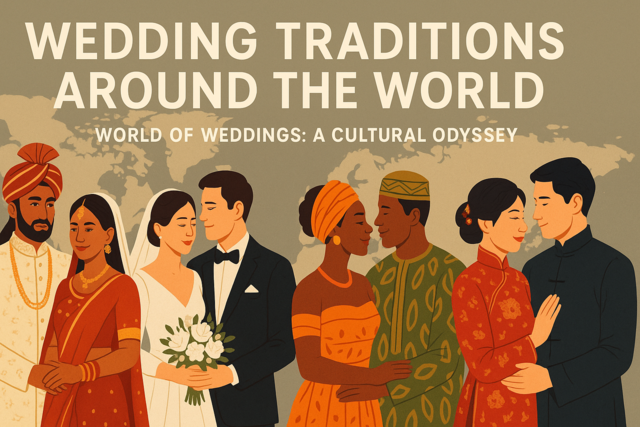Introduction: An image is more complex than one might first perceive. Some might say an image is a representation of something or someone. Another might say that an image is a "likeness." Most often an image is discussed as a thing, like a photo, a drawing, or a piece of art. But the more you consider the use of the word, the more complicated the meaning of the word "image" becomes.
In one way, if you see a photo of a person you know, and you might say, it is a good image of them. You might possibly remark that it caught the essence of the person. But what does "catching the essence of the person" really mean? Does it mean you saw something of the person's character, quality, or personality in the photo? But, you have to ask yourself, "how can that be?" How can a photo show character, human quality or personality?
Now you are beginning to target the complexity of just what an image is all about. An image is nothing until a person views it. At that moment, the moment it is seen by the eye, it is no longer simply an image. It becomes a small piece of data taken in visually and processed by the brain. That means it is put through the gymnastics of intricate neurological connections. Because of the inner workings of the brain, a simple image can bring up all kinds of thoughts, feelings, ideas, and conclusions about the subject of the image. One small image will start an avalanche of associations in your mind. It is important to the basis of this class that this is understood. What happens inside our mind and the minds of others directly affects our behavior. What is seen by the eyes is analyzed and processed, connected and mixed with every part of a person's memory, experience, learning, and bias. Something as simple as an image becomes tangled within the mind of each person, each individual who sees it. This results in an individual interpretation. Each different person will come away with a different interpretation of each image they see. If you add into the mix not only visual data, but sound, smell, or touch, the mental muddle is expounded.
And that is where this article begins. An image, something visual, is put into the brain and sometimes there is also a sound, or another sensory element that is received by the person, processed according to his individual mindset, and that information is analyzed and stored for further use. The nature of human connections with people we know and people we don't know is deeply woven with all that makes us who we are. We will see each other according to our own cultural, sociological, and experiential knowledge and then defined according to that process. How I see the world, how everyone sees the world, is biased according to the path each of us has taken since birth. Who we are and who we are perceived to be can be very different.
A. Are we the person we think we are, or the person that is "perceived?" The simple answer is we are both. It is because we are thinking creatures, constantly taking in data, organizing it into the web of our minds and reacting to such information that creates what we call society or the interaction of people. We are partly who we think we are, who we intend to be, who we have developed into, all stirred up with everybody else's perceptions. That's why we find ourselves trying to "impress" others so often. We have figured it out. No one had to tell us that how we present ourselves means how we are interpreted by others. Only in a society where people are too busy surviving do we lose the tendency to consider our "image." You can also see it in the life of a person who suffers from depression or other illness, both physical and mental. This person is unconcerned about image because they are in survival mode all the time.
For any person who is trying to function in a place where they intend to interact with others, the image of that person will play a role in the success or failure of that interaction. This is the foundation of what many call "fitting in." When children are young, they want to be loved and accepted in their families first. So they learn the "rules" of this tight social group. Parents are right there teaching them and guiding them along. When the young child goes off to school, he is confronted with others who don't seem to know the "rules" and is introduced to new rules and a confused state. All of a sudden children begin to learn that there are other rules that their parents never taught them. They go home and try out the new rules and, depending upon what has been learned, meet with joy or shock from parents. This is when parents begin to negotiate the rules with those learned at school and children learn that what works for one child may not work for him. Throughout school, children learn so many new things different from what was taught by their parents that they begin to form a different set of rules for themselves. These are a mix of what was taught, what has been experienced and what is acceptable within the social realm they prefer to participate in.
Not only do children begin to perceive others, others begin to perceive them. Kids are just trying to figure other kids out. It takes a lot of energy and time in the life of a child. And it continues to increase in depth and width as a child becomes a teen and then an adult. There is no end to trying to learn to negotiate the network of rules that comes at them from every different person they meet.
B. How does the image I have of myself compare with my image as it is perceived by others? As we grow and mix with others more and more, the "rules" of family become faded and we search for the social image we want to have for ourselves. The crossover between who we think we are and how we seem to others is like trying to put a round peg into a square hole. It is a constant guessing game. Am I who I thought I was this morning when I decided to wear this outfit or am I the person you seem to think I am because of this outfit, or the person my mother thinks I have become because of this outfit. We are in a whirling storm of images, image perceptions, and image creation and interpretation.
And then our brain completes formation at about the age of 21 with the frontal lobe finally fully active. The frontal lobe is the center of judgement, problem solving, social understanding, and other brain functions that give us the boundaries we have been seeking all during this time called growing up. Finally, we can settle down and incorporate an image of ourselves that will fit into life in a way that we intend, and in a way that others we are around find acceptable. Those rules taught to us by our family have declared a truce with new ideas from the outside as they are reprocessed continually in our brain.
Along the way most of us develop some skills in interpreting how others are interpreting us. It is a conundrum that twists and turns, at times making sense and at other times only confusing us more. We learn how those people we know and love interpret us and begin to settle into more confident social interactions. That is until we seek a job. And then the old fears about who we are compared to who we appear to be in the eyes of those with whom we want to work return. There are always new connections to learn, new confidences to build and new developments in who we are becoming to challenge our image.
C.How much control do I have over how my image is perceived? Or you might ask, "how can I change the perception of those I am around to what I want it to be?" This is the question of the ages. This is the question that spawns the clothing and accessory industries. Most people want to fit in, and not just when socializing, as important as most think that is, but at their jobs, too. People want to be perceived as behaving and dressing the "correct" way for what they are about. In other words, most of us want our image to be acceptable or better so others will see us as we want to be seen. That is why we spend so much time and money on hairstyles, clothing, driving the "right" car, living in the right neighborhood.
Each region, each culture within that region and each societal group rests upon the whims of those who are their leaders, on historical norms, on religious and business practices, and on the nature of the job we work. There are really so many things to know if you want to appear with "correctness." It can be overwhelming to the average person and that is why we are so willing to go with the masses and make our purchases where our peers shop. We want to be the same. Except for those individuals who want to be different, who hold the value of "correctness" at minimal standards or who cannot afford to keep up with the Jones, so to speak.
Keeping up with what is seen as correct is difficult and sometimes impossible. On top of that it is ever changing. There are the trends, the seasons, the colors, the lengths, the patterns and of course what looks good on your body type. All of this is so we can put forth the very image we want others to perceive when they look at us. We don't want others to see us as we appear right out of bed in the morning or after working out at the gym, unless it is others at the gym. See how it works? The sweaty you can fit in at the gym but certainly not at work. The work you, fits well for the office, but at the gym you would definitely stand out � and not in a good way. People would see you as strange if you got on a treadmill with your suit and dress shoes.
Image is big part of our lives. Just go look in your closet, at the amount of bottles in your shower, and at your credit card statement, if you don't believe you are caught in the web. It extends from what we actually look like to our clothes, cars, homes, furniture, and on and on and on. There is only a handful of people exempt from this challenge. That is where the Image Consultant steps in. The Image Consultant is ready and armed and makes "image" her job. It is a skill that may be natural but can be learned. It is a support needed by every person on earth wherever that person may live. It is not an industry that will fade with time. It has always been and always will be.
Summary: The image a person creates for themselves is important. Your image is partly how you make yourself appear to others but it is also mixed with how others see you from their personal point of view. One can never know exactly how they will appear to others because "others" are individuals who are draped in their own tent of experience, culture, history, and ideas. They are individuals whose brains receive the data they see and hear, smell, feel and taste and then automatically, without the person even being consciously aware, make connections between that data and what is already in their heads. It's a bit like playing at a roulette wheel. You have little control. All you can control is how you present yourself to others. And many fall short right at that point. Many people have no skill and less luck with the development of their presentation of themselves.
This is where the Image Consultant comes in. An Image Consultant can teach skills every person will need at one point or another. Behaviors, manners, grooming, dressing, styles, trends, once called decorum and deportment are needed more than ever, and in every aspect of life. Everyone wants to fit in. Everyone wants to be accepted. Everyone wants to be normal.
Having a total understanding of what image is, how an image is expressed and received by others is required before you can begin to change that image. If an image consultant is to be successful in the long run, that consultant has to grasp the depth of what makes an image. Simply explaining how to do make-up will not change a woman's image if she walks slumped over, is rude, or if she wears the wrong clothes. This article offers a quick view into the totality of image creation. This article is to put you into the mind-set of the extensive nature of changing the image of one person, that it can go much deeper than the surface level changes, and each individual will need a plan fit to her needs.





























